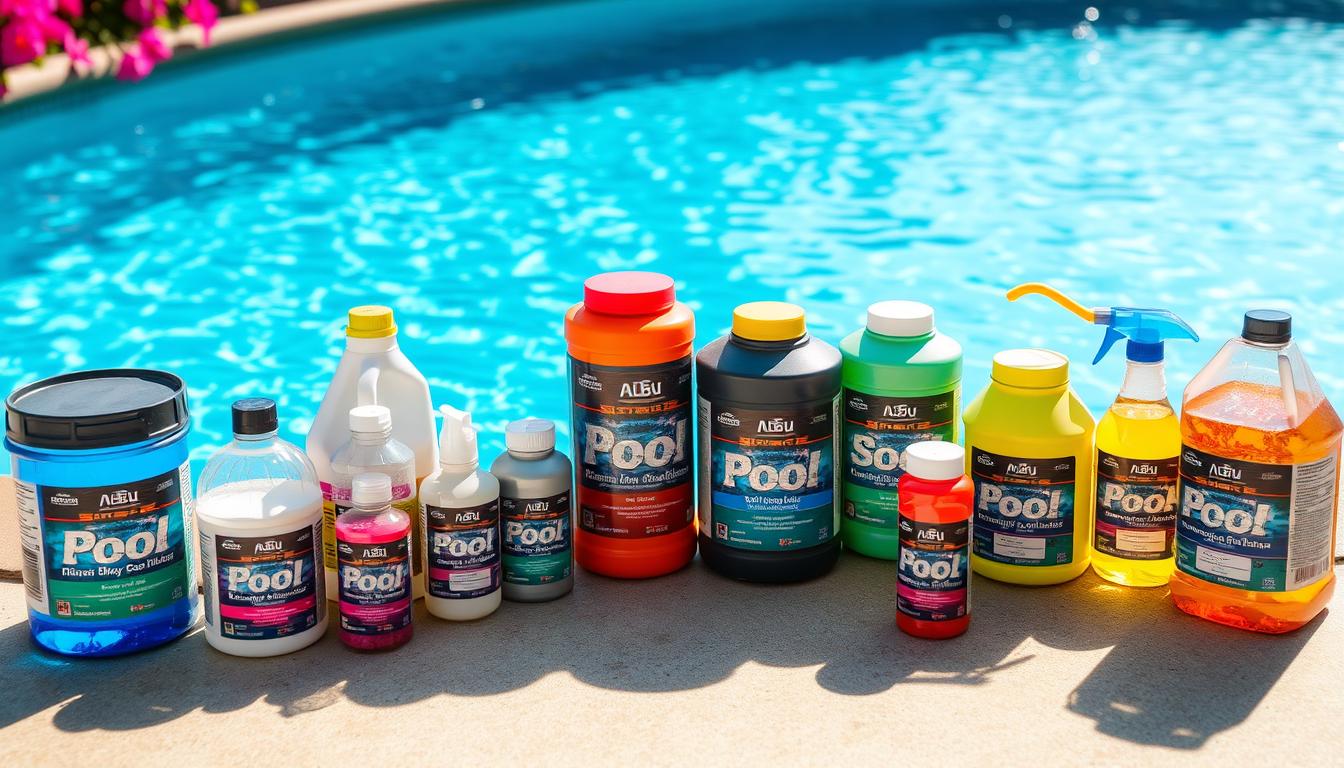
Pool shocking is vital for clean, safe water. But how long should you wait before swimming? Let’s explore the safe waiting period after using pool shock chemicals.
Shocking eliminates contaminants and keeps water clean. It involves adding high doses of chlorine or other chemicals. This temporarily raises chlorine levels above the safe swimming range.
The waiting time after shocking depends on several factors. These include shock type, amount used, pool size, and water conditions. Generally, wait at least 24 hours after using chlorine-based shock before swimming.
For stronger shocks or severe algae problems, the wait can be up to a week. Always test the water before allowing anyone to swim.
Key Takeaways:
- Pool shocking is essential for maintaining clean and safe swimming water
- The safe waiting period after shocking ranges from 24 hours to a week, depending on the type of shock and pool conditions
- Testing pool water for safe chlorine levels (1-3 ppm) and pH balance (7.2-7.8) is crucial before swimming
- Factors like pool size, water temperature, and the severity of contamination can impact the waiting time
- Regular pool maintenance and proper shock dosage calculation can minimize downtime and ensure swimmer safety
Understanding Pool Shock and Its Purpose
Pool shock treatment keeps swimming pools clean and healthy. It uses concentrated chemicals to eliminate contaminants, bacteria, and algae. This process resets water chemistry and ensures optimal pool water quality.
What Is Pool Shock?
Pool shock adds a high dose of chlorine or non-chlorine shock to pool water. It quickly raises chlorine levels to destroy organic contaminants, bacteria, and algae. This treatment maintains a hygienic swimming environment and improves water quality.
Why Is Shocking Your Pool Important?
Shocking your pool kills harmful bacteria that can cause health issues. It breaks down organic contaminants like sweat and cosmetic products. Pool shocking also clarifies the water, making it more visually appealing.
The frequency of pool shocking depends on various factors. These include bather load, temperature, rainfall, and filtration system effectiveness. Typically, shock your pool every 1-2 weeks during swimming season.
Heavily used pools or those in high temperatures may need more frequent shocking. The same applies during periods of heavy rainfall.
| Pool Usage | Recommended Shocking Frequency |
|---|---|
| Heavily used pools | Weekly |
| Pools not used daily | Bi-weekly |
Types of Pool Shock
There are two main types of pool shock: chlorine-based and non-chlorine. Chlorine-based shock, like calcium hypochlorite, effectively oxidizes and sanitizes water. Non-chlorine shock, such as potassium monopersulfate, oxidizes water without adding chlorine.
Non-chlorine shock is a gentler alternative for regular maintenance. It’s often used between chlorine shocks to keep the pool clean.
| Type of Shock | Examples | Function |
|---|---|---|
| Chlorine-based | Calcium Hypochlorite, Sodium Dichlor | Oxidizes and sanitizes water |
| Non-chlorine | Potassium Monopersulfate | Oxidizes water and breaks down contaminants |
Factors Affecting Waiting Time After Shocking Your Pool
Pool shock waiting times depend on several key factors. Understanding these variables is crucial for maintaining pool chemical safety. It helps prevent potential chlorine overdose symptoms.
Chlorine Levels and Their Impact on Swimmers
Chlorine levels determine when it’s safe to swim after shocking. The ideal chlorine range for swimming is 1.0 to 4.0 parts per million (ppm). High chlorine exposure can cause skin and eye irritation.
It may also lead to respiratory issues. Regular pool water testing is essential to avoid these health risks. Ensure the chlorine level is safe before swimming.
Type and Amount of Shock Used
The shock type and amount affect the waiting period. Calcium hypochlorite shock may require longer wait times than non-chlorine products. Generally, wait about an hour per pound of shock added.
This allows chemicals to disperse evenly. It also helps chlorine levels stabilize. Always follow the manufacturer’s instructions for your specific shock product.
Pool Size and Water Conditions
Pool size and pre-shock water conditions impact safe-level recovery time. Larger pools may need more time for chemicals to circulate. Smaller pools might be ready for swimming sooner.
Initial chlorine levels, pH, and alkalinity affect shock effectiveness. The presence of contaminants can also influence waiting time. Regular testing helps minimize wait periods.
Maintaining proper chemical balance between shocks ensures a safe swimming experience. It also helps reduce the time you need to wait after shocking.







